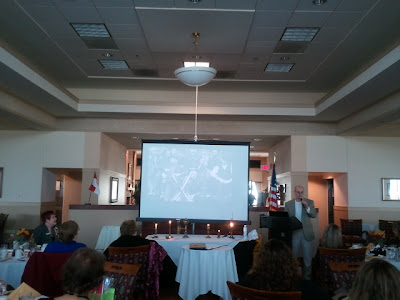We learned that the first light sources in the colonies were candles - usually made of beeswax or tallow. Colonists used light for the task at hand, not for lighting the whole room.
Soon after, various types of oil would be used in lamps - an early oil used on the east coast was whale oil. An advancement in oil lamps was the "Betty Lamp" which kept oil in a covered container to keep animals from eating the fuel.
It is always interesting to learn about how different our ancestors' lives were from ours!









